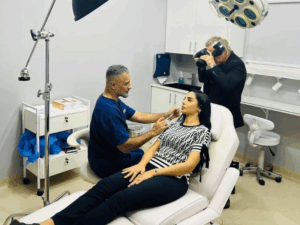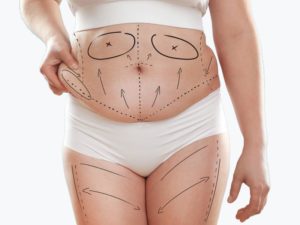Breast Reduction
Gynecomastia and Hormonal Imbalance: Dr. Faisal Salim

What is Gynecomastia?
Gynecomastia is a medical condition that results in the enlargement of male breast tissue, and it can affect men of all ages. Hormonal imbalances are a common cause of gynecomastia, and in this blog post, we will explore the connection between the two.
What is Hormonal Imbalance?
Hormonal imbalance refers to a condition where there is an excess or deficiency of certain hormones in the body. Hormones play a vital role in regulating various bodily functions, including growth, metabolism, and reproduction. When the levels of hormones in the body are not balanced, it can lead to a range of symptoms and health problems.
Hormonal Imbalance and Gynecomastia
It is commonly caused by a hormonal imbalance between estrogen and testosterone. Estrogen is a female hormone that is also present in males, while testosterone is a male hormone. Normally, males have higher levels of testosterone, which prevents the development of breast tissue. However, if the body produces too much estrogen or too little testosterone, it can result in gynecomastia.
Causes of Hormonal Imbalance
There are several factors that can cause hormonal imbalances in men, including:
- Aging: As men age, their levels of testosterone tend to decline, while estrogen levels remain relatively stable. This can lead to an imbalance between the two hormones and result in gynecomastia.
- Medications: Certain medications, such as anti-androgens, anabolic steroids, and some anti-depressants, can cause hormonal imbalances and lead to gynecomastia.
- Medical Conditions: Certain medical conditions, such as hypogonadism, hyperthyroidism, and Klinefelter syndrome, can cause hormonal imbalances and lead to gynecomastia.
- Lifestyle Factors: Factors such as stress, poor diet, lack of exercise, and exposure to environmental toxins can also contribute to hormonal imbalances.
Diagnosing Hormonal Imbalances
To diagnose hormonal imbalances, your doctor will likely perform a physical exam and order blood tests to check hormone levels. Depending on the results, further testing may be required to determine the underlying cause of the hormonal imbalance.
Treating Hormonal Imbalances and Gynecomastia
In cases where gynecomastia does not resolve on its own or is causing significant physical or emotional distress, surgical treatment may be necessary. Gynecomastia surgery involves the removal of excess breast tissue and fat from the chest area. It is a safe and effective procedure that can improve the appearance of the chest and boost self-confidence. Dr. Faisal Salim, a plastic surgeon in Dubai who has experience in various cosmetic surgeries such as breast augmentation in Dubai, breast lift in Dubai, breast reduction, and facelift surgery in Dubai, is well-equipped to perform this procedure and help patients achieve their desired results. If you need any surgery, please book your appointment with Dr. Faisal Salim and get all your doubts cleared.
Patient Testimonials








